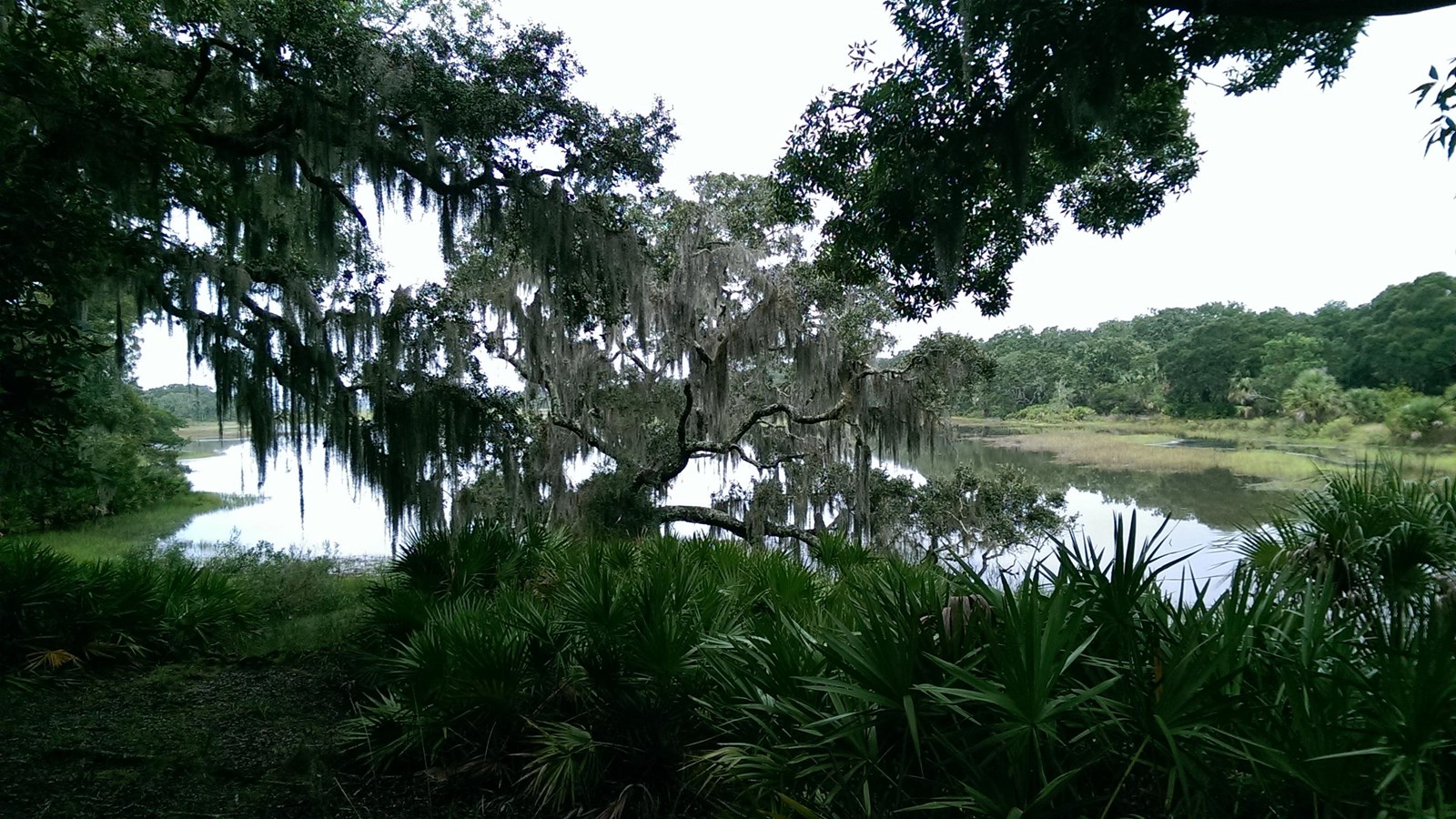Last updated: June 21, 2023
Place
St. Catherines Island, GA

Photograph courtesy of Wikimedia User William D Bone
Mission Santa Catalina de Guale on St. Catherines Island was the northernmost outpost in Spanish Florida between 1587 and 1680, and one of the most important Spanish missions in what is now the southeastern United States until 1684. For over a century, Catholic friars and Spanish soldiers lived with Guale Native Americans on the wooded sand dune and salt marsh island that is part of Georgia’s Sea Islands. After the Spanish abandoned the island, Mary Musgrove, a Muskogee leader, claimed the island and then Button Gwinnett, a signer of the Declaration of Independence, called it home. Today, the St. Catherines Island Foundation, Inc. owns and manages the island, which is a National Historic Landmark, as an historic site, archeological resource, and wildlife preserve.
During the colonial period, Spanish Florida was a territory in southeastern North America that Spain claimed in 1513 and permanently settled in the 1560s. Permanent settlement began in 1565 after the king of Spain granted Pedro Menéndez de Aviles the privilege to govern Spanish Florida. During Menéndez’s governorship, Spanish Florida stretched from present-day South Carolina to the Florida peninsula. When Menéndez arrived in North America, he drove French Huguenots from the coast and then began to establish mission outposts along the coast where he was able to make alliances with the indigenous towns. Santa Catalina was the first Spanish outpost in Georgia and the largest mission in the Guale province.
After he founded St. Augustine in 1565, Menéndez led an expedition to St. Catherines Island in 1566. The Spaniards initially called the island “Guale,” after the people who lived there. Menéndez stationed 30 soldiers on the island after he made contact and two years later Jesuits established Mission Santa Catalina de Guale. In 1587, English privateer Sir Francis Drake attacked Florida after he raided Spain’s Caribbean colonies. In response to these attacks, Spain consolidated its colonial presence in Florida by reducing the number of missions and the size of the colony. The Spanish abandoned outposts north of Santa Catalina and the island mission became the northernmost base of Spanish colonial power on the east coast for nearly a century afterward. During that period, Spanish authorities often recommended moving the Florida capital at St. Augustine to Santa Catalina.
By the time of Drake’s attacks on the Spanish colonies, Franciscan Catholic missionaries had replaced Jesuits in the Florida missions and at Santa Catalina. The Franciscans arrived at Santa Catalina in 1573 and ran the mission afterward. A Guale revolt against the mission system drove the Spanish out of Santa Catalina for a brief time in 1597, but St. Augustine sent reinforcements to suppress the rebellion and reinstated the mission. After the rebellion, Spanish soldiers, Franciscans, and Christian Guale Native Americans rebuilt the mission and ran Santa Catalina as the military, political, religious, and economic center of Spain’s influence in the Guale province. In the 1680s, attacks by the British and by Westo Indians forced Spain and its Guale allies to abandon Georgia. The Spanish left Santa Catalina in 1680, and by 1684, Spain abandoned all six of its Guale province missions.
After Spain deserted Mission Santa Catalina, American Indians reclaimed the island and its final indigenous owner was Mary Musgrove, a Muskogee (Creek) leader. After Musgrove died, her husband sold the island in 1765 to a delegate to the Continental Congress and future signer of the Declaration of Independence, Button Gwinnett. By the time Gwinnett occupied the island it had the Anglicized name, St. Catherines Island. The private island changed ownership throughout the 19th and 20th centuries. Today, the St. Catherines Island Foundation funded by the Edward J. Noble Foundation owns the island. Edward J. Noble, a businessman, was the island’s final individual owner.
A partnership between the Edward J. Noble Foundation and American Museum of Natural History in New York City initiated archeological research at the island in the 1970s that carried into the mid-1990s. Archeologists conducted the most significant studies of the island’s Spanish history in the 1980s after they discovered the site of Mission Santa Catalina in 1981. No evidence of Santa Catalina mission is visible on the surface, but surveys revealed buried evidence of a fortified village.
Archeologists determined what they found were the remains of two churches, a cemetery, kitchen area, two wells, and dwellings. The older church is the first Christian church built in Georgia. A palisade with bastions once surrounded the mission plaza and inner buildings. The buildings and structures were of wattle and daub. This building technique uses woven branches, or wattle, to create a frame that then gets a plaster of daub, made from mixtures of mud, clay, or animal dung. Researchers at the Santa Catalina site also discovered numerous artifacts, including tens of thousands of valuable beads, food remains, jewelry, rosaries, crosses, and bronze pieces of a bell.
St. Catherines Island today is a private nature preserve and research site that educators and scholars use to study Georgia’s coastal ecology, geology, fauna, flora, and 6,000 years of human history. The beach is accessible by private boat, but the interior of the island is not accessible to the public in order to conserve its natural and historic resources. Over a million artifacts found on the island are part of the St. Catherines Island Foundation and Edward John Noble Foundation Collection, which is stored and exhibited at the Fernbank Museum of Natural History in Atlanta, Georgia.
